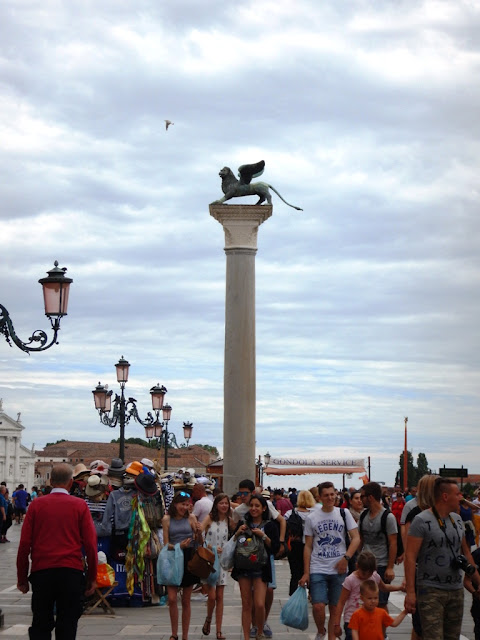I am so excited to be able to take you once more to one of the tiniest states in the world. Let me welcome you today to the beautiful
Republic of San Marino.
San Marino is divided into nine castles, being largely convergent with former parishes. The capital city is called (of course)
San Marino. The city of San Marino is located on a high hill called Monte Titano, that dominates a large plain. You can reach it by car but you can also take the cable car, painted blue as the national flag of the country.
From the observation deck next to the upper station you can admire the villages below the capital city and, since San Marino is the fifth smallest country in the world, obviously also a large area of Italy.
San Marino has been a republic since ever, long time before anyone anywhere thought it would be possible. For sure more than a thousand years. This is why, the palace that you will find on the main square of the capital does not belong to a king but to the people. It is the Town Hall, called here
Palazzo Publico. The lady on the postument is Liberty herself.
The governmental buildings are quite modest - if everything is "ours" there is no need to show off. This one is the siege of the Secretary of State.
These unique values of San Marino which was been able to survive as a republic since the Middle Ages have gained it a place on the
UNESCO World Heritage list.
Just next to the Town Hall you will find the
basilica of San Marino, dedicated to Saint Marinus, the founder and patron of the Republic.
The classical style is visible both on the outside and inside.
I liked in particular two items. The ceiling with the beautiful rosettes ...
... and the throne. Of course it is not a throne for a king, since San Marino has been a republic since forever. You surely noticed that it is quite large. No, it is not meant for the boss of the largest fast food company weighting two hundred kilograms. It is simply designed for two people. To be more precise, for the double-head of San Marino. Because San Marino is headed by
Captains Regent. Always two, always coming from opposite parties and always serving six months. Apparently it is a tradition that is linked to the
consuls of the Ancient Rome. And since the Captains Regent share the same job, they also literally share the same chair. Or the same throne if you like.
The city of San Marino is best known for the three castles. Let's try to find them all.
The first one will be the
Castello della Guaita, named after on of the peaks of the city.
This fortress has been built in eleventh century and then rebuilt in fifteenth century, to guard and protect the city.
The inner courtyard is surprisingly large.
But the most amazing element is the tower which was built without any foundations, directly on the rock. Its sharp edge makes it look a bit like sail.
When you look over the crenelage you are likely to notice the second castle.
It is
La Cesta o Fratta, easy to recognise by its pentagonal tower. Why don't we go there to see it ourselves?
We need to walk along the city walls.
The second tower was built in the thirteenth century on the remainings of an old Roman fort.

Inside the tower you will find the Armory, converted now into a museum. If you look carefully, you will notice on the wall the coat of arms of San Marino, depicting (yes, you got it right!) the
Three Towers of San Marino.
Actually, Cesta is the best place to see it. On right hand side you can see the First Tower of Guaita ...
... and on the left hand site, the Third Tower of Montale. Unfortunately, the last tower is not open to public. One reason can be
that, as a former prison, it has its door somewhere around seven meters
above the ground.
I hope that you have enjoyed this walk through San Marino. Not so often one can visit half a country in one afternoon. Now one last thing before we leave. I hope some of these will reach my
Postcrossing friends before they read these words. If yes, let me know!


































































